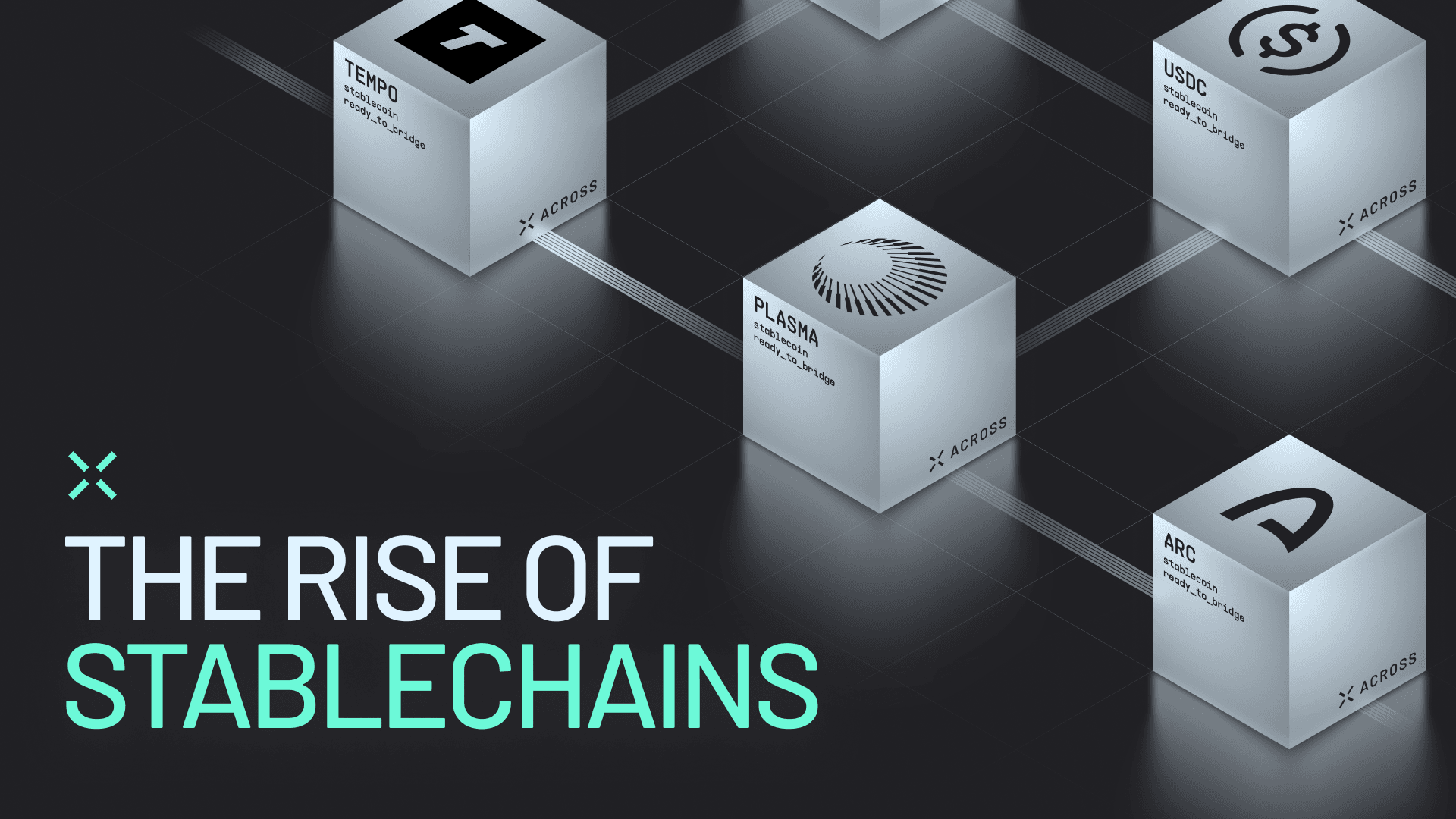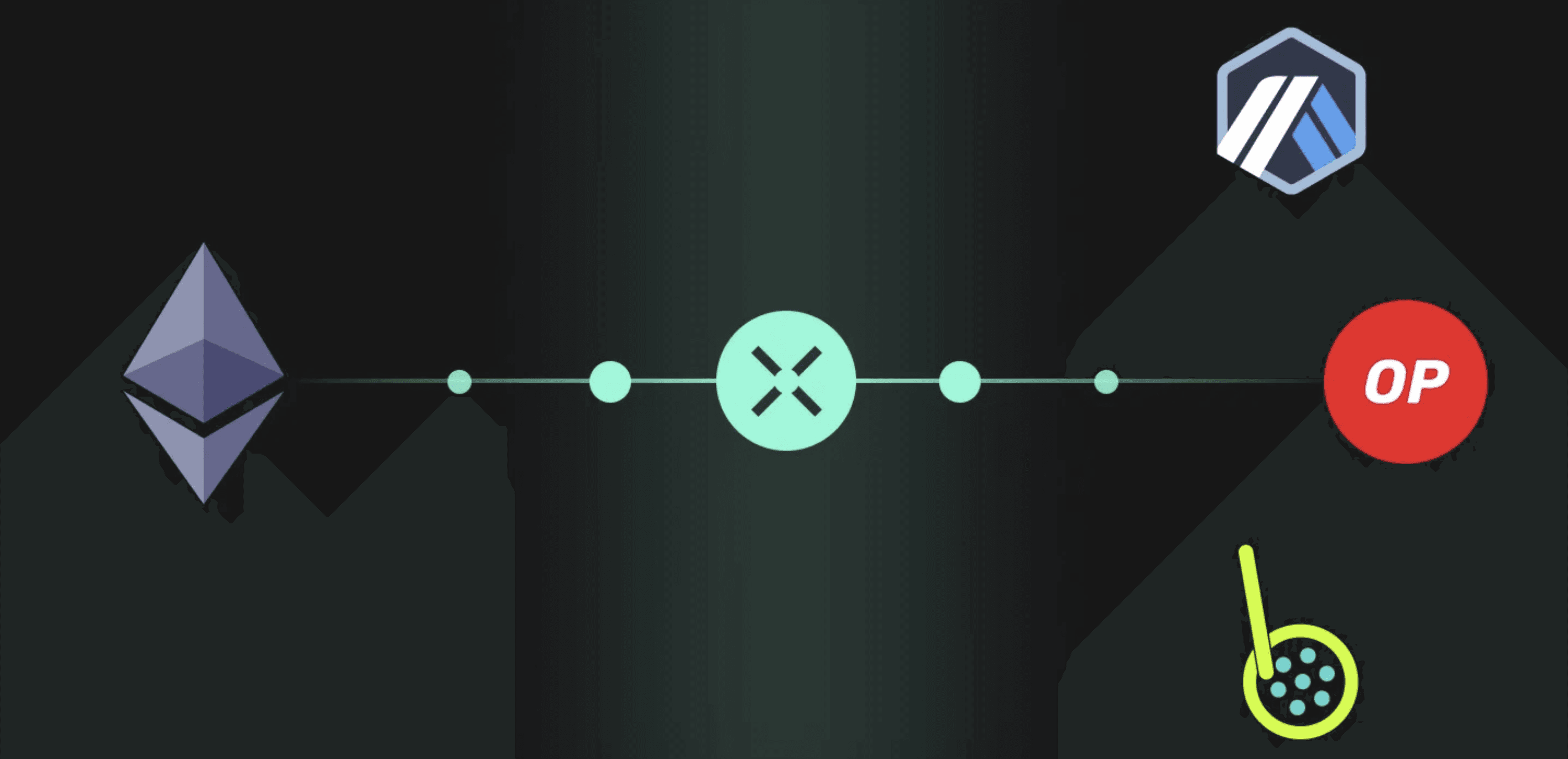TL;DR
Stablechains are the next evolution of onchain money. They are blockchains purpose-built for fast, predictable, stablecoin payments. Networks like Plasma, Arc, and Tempo are redefining how digital dollars move, and Across is the interoperability layer that connects them. The Stablechain Era has begun, and you're here early.
Introduction: Welcome to the Stablechain Era
For more than a decade, blockchains have been trying to make money move at internet speed.
Bitcoin introduced the idea of digital cash, and networks like Stellar, Ripple, and Celo (early pioneers in stablecoin payments) turned that vision into real, fast-moving payment rails. But the story didn’t end there. It evolved.
Stablecoins like USDT and USDC found product–market fit first, powering remittances, savings, and global payments long before anyone talked about stablechains. Today, they move trillions of dollars a year and dominate onchain activity.
Now, the industry is reorganizing itself around the success of stablecoins. A new generation of EVM-compatible networks, known as stablechains, is emerging to formalize what stablecoins already proved: that money flows best onchain.
Built for compliance infrastructure, value capture, and genuine performance upgrades, stablechains are quickly becoming the next-gen layer of infrastructure around stablecoins.
Welcome to the Stablechain Era. Let’s dive in.
What Is a Stablechain?
A stablechain is a blockchain purpose-built for stablecoins.
While general-purpose networks such as Ethereum and Solana host stablecoins, they weren’t optimized for fast, predictable payments for fiat-based cryptocurrencies. Stablechains change that by aligning every layer of their design (fees, finality, and compliance) with the needs of digital dollars.
These networks typically let users pay gas in stablecoins, eliminate volatile fees, and confirm transactions in seconds or less. Many integrate privacy tools, compliance controls, and even on-chain foreign-exchange systems to swap one stablecoin for another.
Rather than competing with Ethereum or other major L1s, stablechains are replacing SWIFT and Visa for the next generation of programmable money.
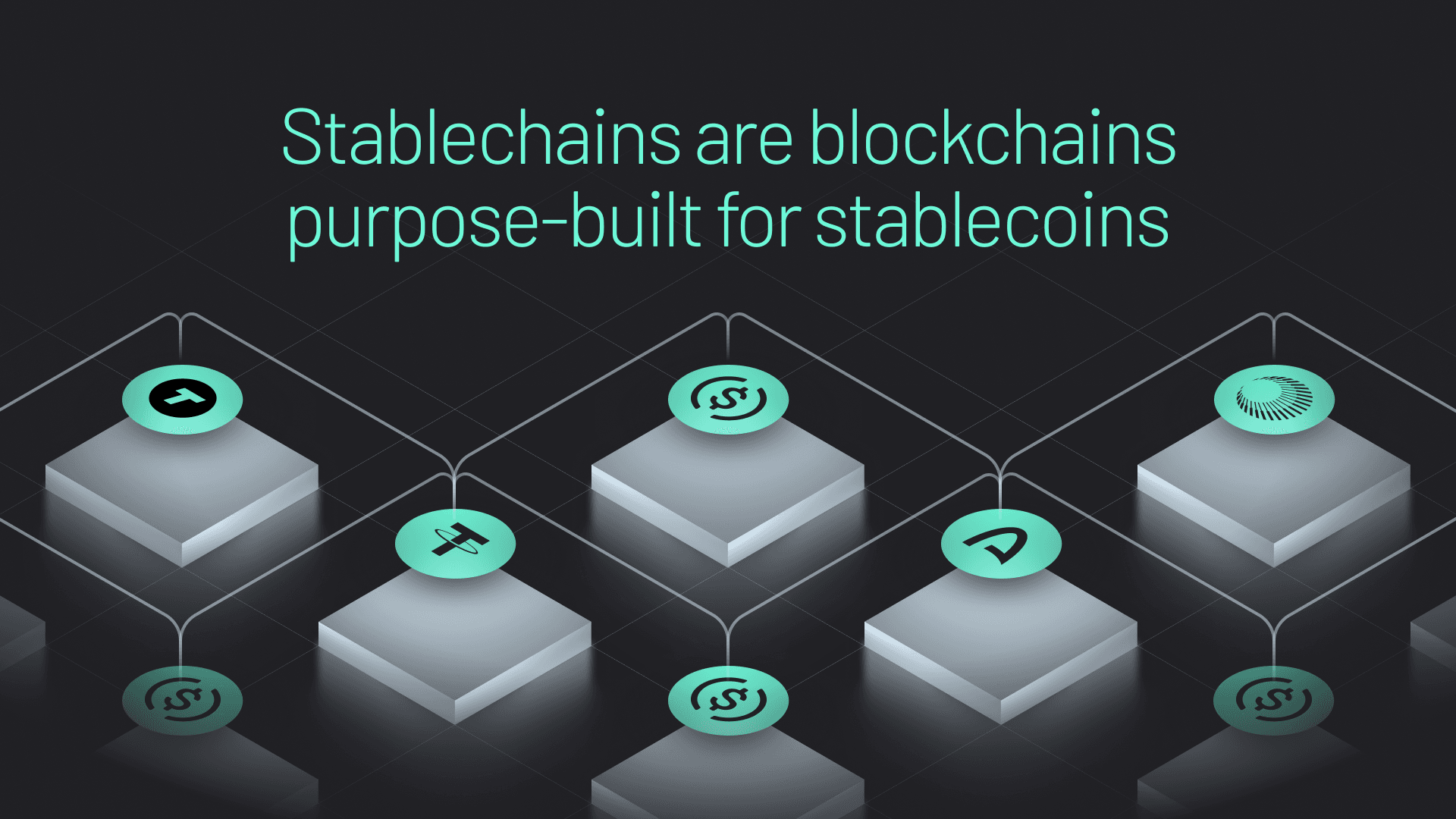
Stablechains are blockchains purpose-built for stablecoins.
Why Stablechains Matter
Stablecoins already power most of the onchain value moving across exchanges, DeFi, and payment networks. Stablechains build on this foundation by improving how digital dollars move, making transfers faster, more affordable, and with costs anchored to the dollar. Additionally, they reduce the friction of native gas tokens, minimize fragmented bridging flows, and unlock 24/7 settlement for institutions in a programmable environment.
Let’s take a closer look at the leading stablechains, both live and in development.
Plasma: The Stablecoin Powerhouse for USDT
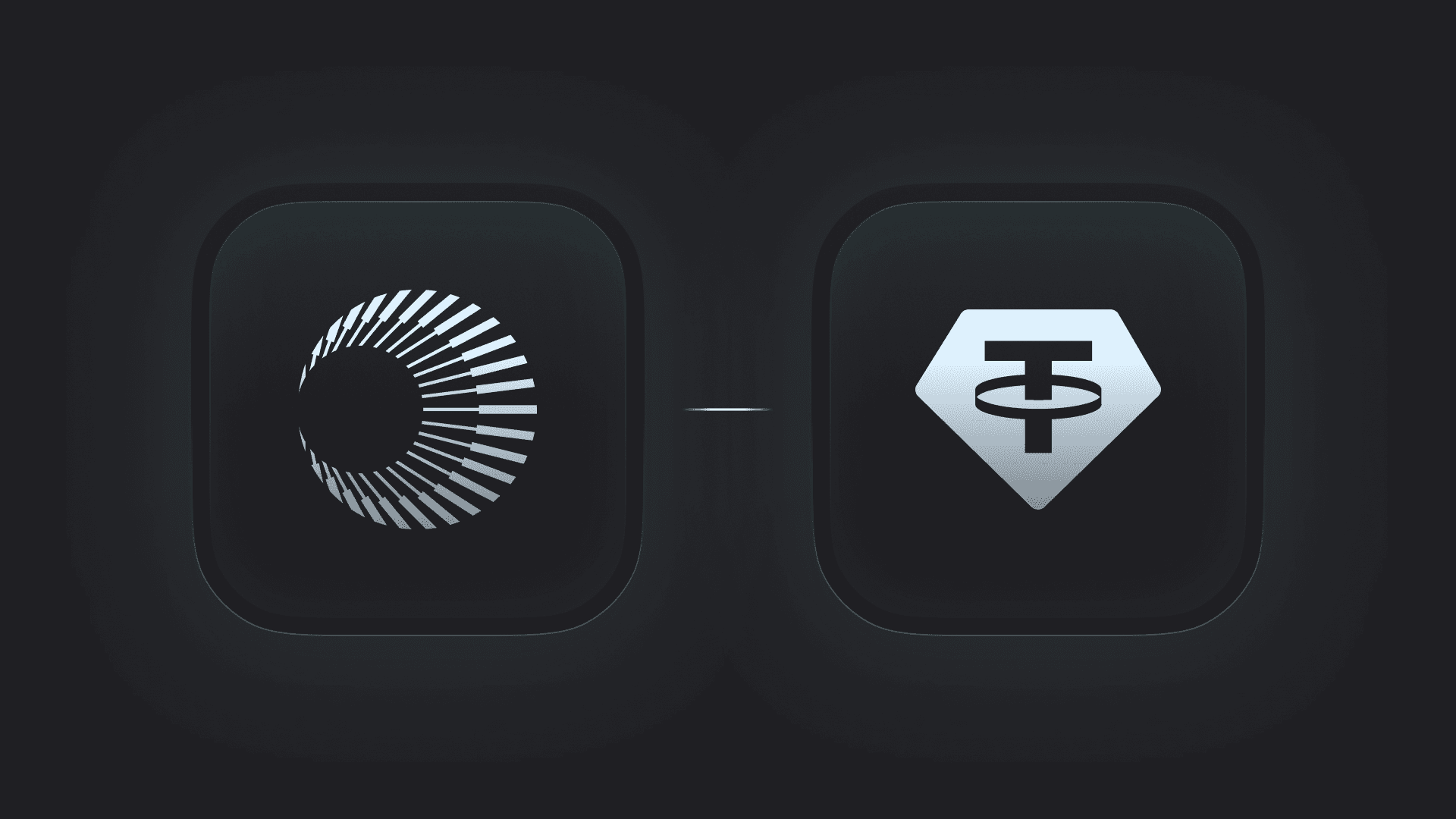
Plasma: The Stablecoin Powerhouse for USDT.
Plasma Chain is Tether’s official blockchain for USDT, designed to make dollar transfers instant and free. Plasma mainnet is live, fully EVM-compatible, and already processing billions in stablecoin transactions.
Built on PlasmaBFT, the network handles over a thousand transactions per second with instant finality. Its defining feature, the Paymaster system, covers gas fees so users can send USDT at no cost. Fees for other actions can also be paid in stable assets like USDT or BTC, eliminating the need for a separate token entirely.
Other notable features:
Optional confidential transactions for private payments.
A native Bitcoin bridge that supports BTC-backed stable transfers.
The XPL token powers staking and governance but is not required to pay as gas for everyday transactions. Users can pay gas directly with supported stablecoins, eliminating the need for a separate volatile token.
A focus on simplicity and usability for non-technical users.
Since launch, Plasma has surpassed $13 billion in bridged liquidity and onboarded more than 100 DeFi partners including Aave, Euler, and Fluid. Its companion app, Plasma One, extends those capabilities to everyday users by enabling fee-free USDT transfers and easy off-ramp functionality, positioning itself as the retail stablechain for remittances, savings, and day-to-day payments.
Arc (by Circle): The Institutional Stablechain
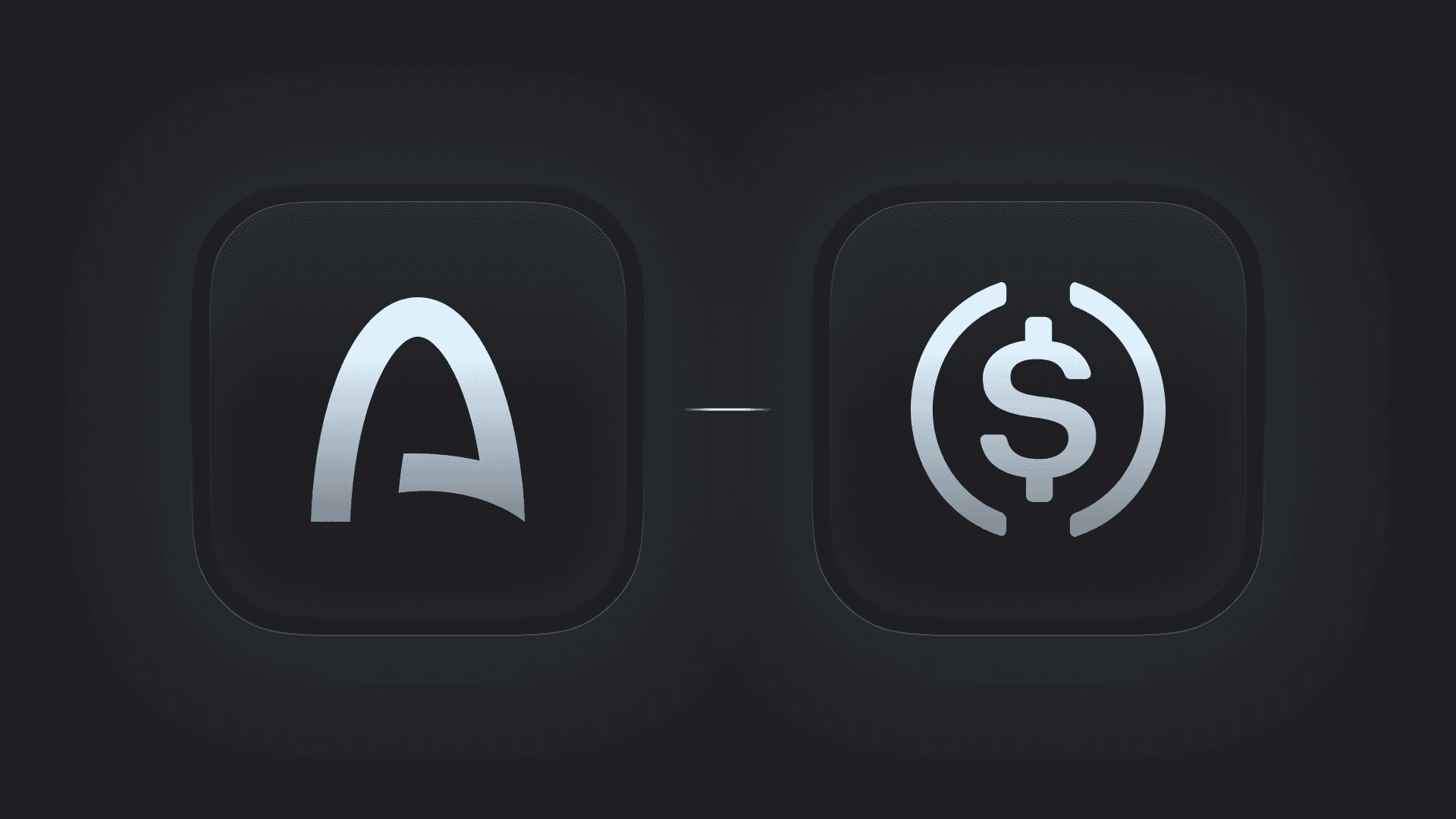
Arc (by Circle): The Institutional Stablechain.
If Plasma serves the user, Arc Chain serves the institution. Built by Circle, the issuer of USDC, Arc is an open, high-performance blockchain designed for compliance, scale, and financial-grade stability.
Arc uses Malachite BFT, a Tendermint-derived consensus protocol achieving sub-second finality and throughput above 50,000 TPS, while retaining full EVM compatibility. Its native gas token is USDC, eliminating volatility from network fees. A built-in FX engine lets users swap stablecoins like USDC and EURC directly onchain, while confidential transfer modules enable privacy when required by enterprises.
Arc’s ecosystem and integrations:
Deep alignment with Circle’s suite: CCTP, Circle Mint, and Wallets.
Participation from over 100 institutions, including Visa, BlackRock, HSBC, Coinbase, and OpenAI.
Governance and validation roadmap focused on gradual decentralization.
Currently in public testnet, Arc’s mainnet is expected in 2026. Its focus is clear: becoming the institutional-grade stablechain for onchain treasury, global settlements, and tokenized assets. Arc aims to be the financial infrastructure layer where stability and regulation meet.
Tempo (by Stripe & Paradigm): The Payments-First Blockchain
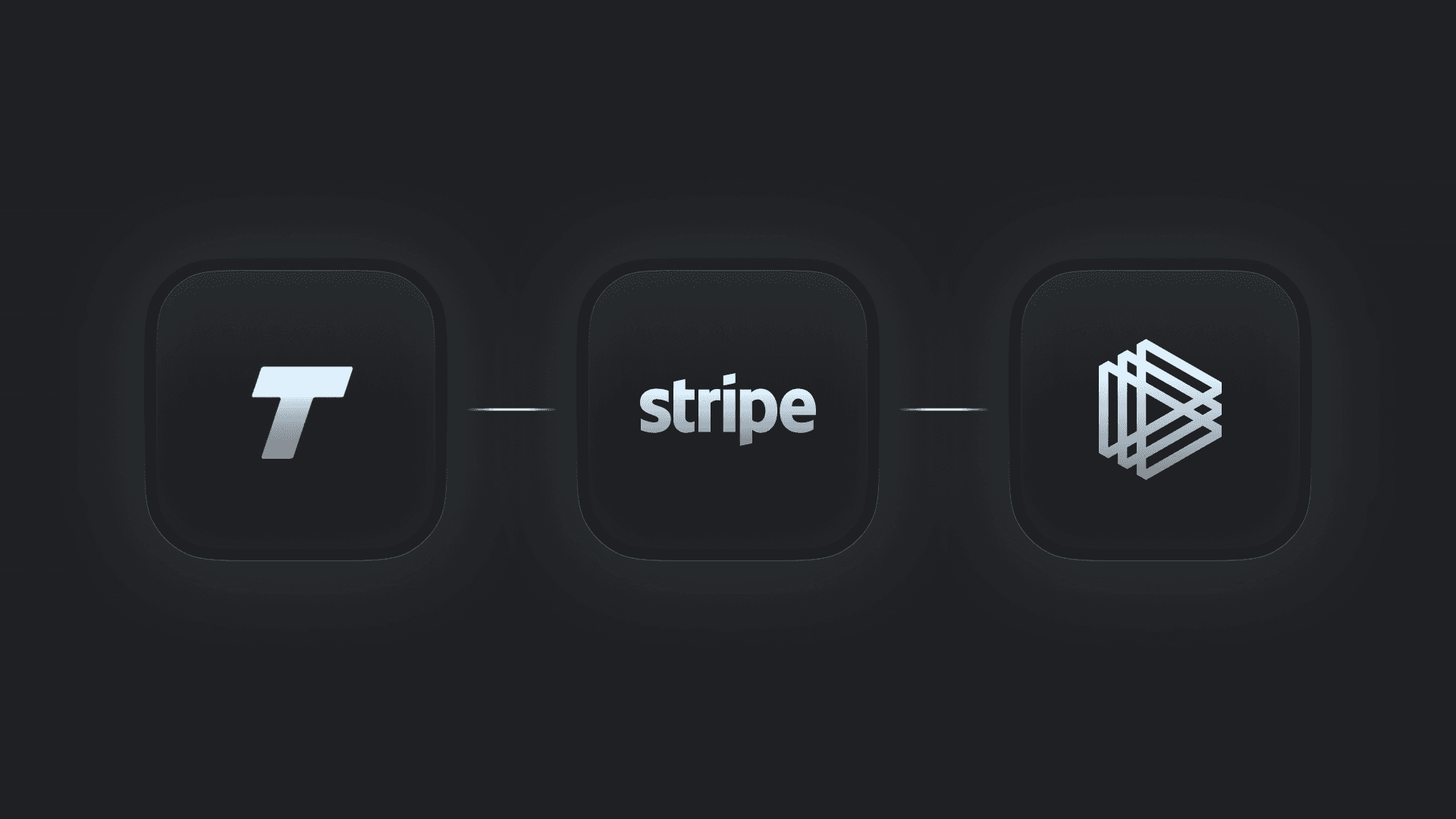
Tempo (by Stripe & Paradigm): The Payments-First Blockchain.
Tempo Chain, incubated by Stripe and Paradigm, is the stablechain built for payments at scale. It is currently in private testnet and aims to process up to 100,000 transactions per second, rivaling Visa and Mastercard in speed.
Tempo adopts a neutral, multi-stablecoin approach. It has no native token. Users can pay gas in any major stablecoin, while a built-in AMM automatically swaps it into validators’ preferred asset. This design makes Tempo issuer-agnostic and frictionless for real-world payments.
Core innovations include:
Account abstraction and ISO 20022 metadata (the global messaging standard used by banks for payments) bridge crypto and traditional finance.
Protocol-level compliance hooks enable enterprise-grade oversight.
Integration with global partners, from Stripe, Visa, and Shopify to DoorDash, Deutsche Bank, Nubank, and OpenAI.
With over $500 million in funding, Tempo’s mission is to bring stablecoin payments into everyday life by powering merchant checkouts, payroll systems, and even AI-driven micropayments. By staying neutral and token-free, it aims to become the universal stablechain connecting fintechs, commerce, and on-chain money flows.
Comparing the Stablechains
Each stablechain serves a different audience but shares the same mission: make stablecoins move faster, cheaper, and more reliably.
Plasma proves the model works. It’s already live and processing billions in transfers.
Arc leads in compliance and institutional trust, backed by the world’s largest financial players.
Tempo pushes speed and neutrality, creating a chain for the next wave of fintech adoption.
Together, they define the early landscape of the Stablechain Era, where money moves at the speed of the internet.
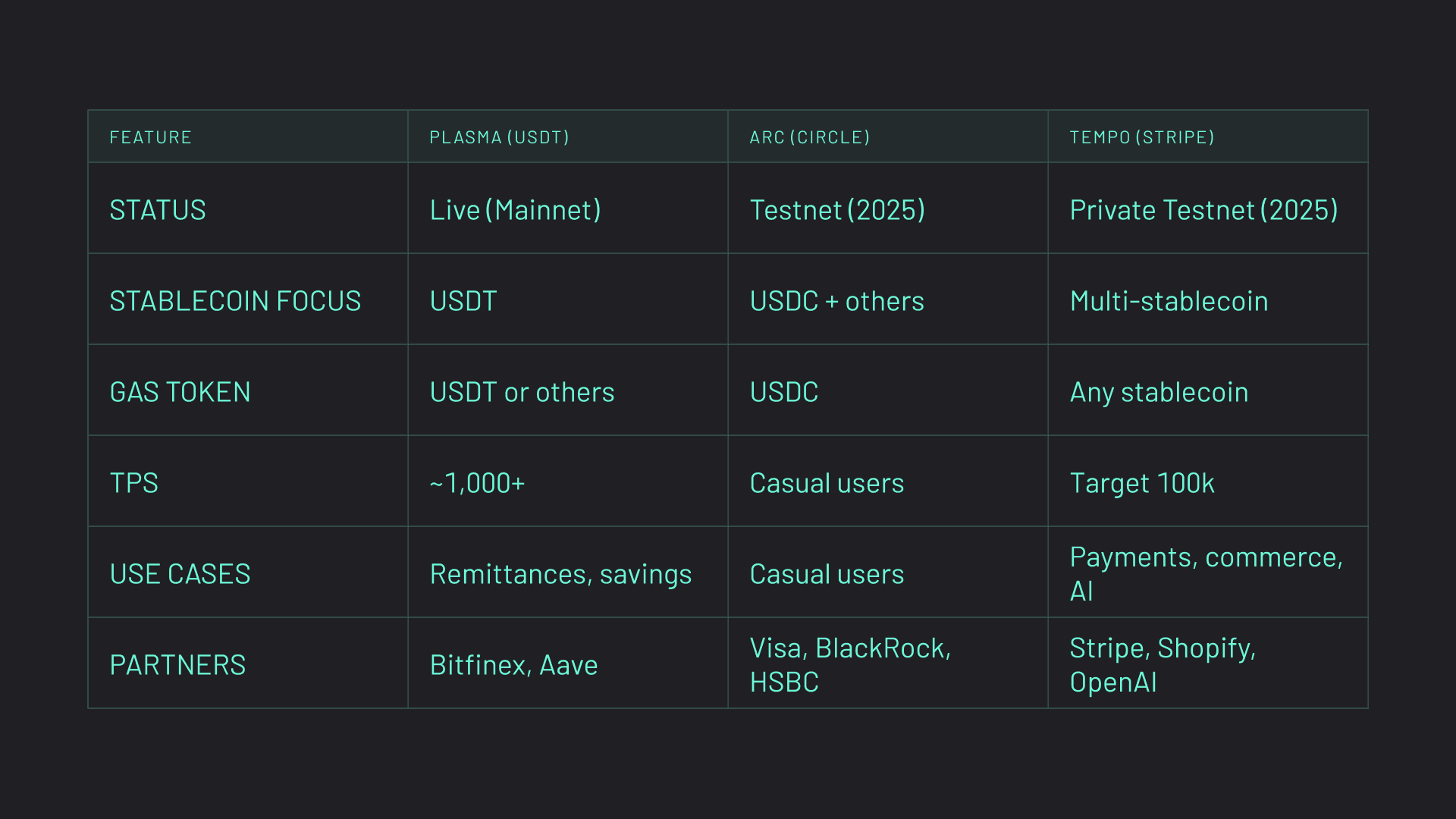
Stablechain comparison: Plasma vs. Arc vs. Tempo.
Bridging Stablechains: Why Interoperability Matters
As stablechains multiply, one truth becomes clear: money can’t reach its full potential if it’s trapped on isolated networks.
Each of these new blockchains—Plasma, Arc, and Tempo—is optimized for its own ecosystem. But users will want to move stablecoins seamlessly between them, just as easily as they send a text.
That’s where interoperability becomes the next frontier. To make stablecoins truly universal, they need a fast, reliable way to flow between stablechains without friction, risk, or delay.
This is exactly the problem Across solves.
Across Protocol: The Ultimate Interoperability Layer for Stablechains
Across Protocol is the leading bridge for stablecoins and other assets across the multichain ecosystem. It already connects many of the chains where stablecoins live today—including Ethereum, Solana, BNB Smart Chain, and many popular L2 chains—and its architecture is perfectly suited for the emerging stablechain era. In fact, Across already supports Plasma as a day-one bridge.
Across stands out for a few reasons:
Speed: Most transfers settle in seconds.
Cost-efficiency: Fees stay among the lowest in the industry thanks to its intent-based design.
Security: Relayers offload finality risk from end-users. Every transaction is verified by UMA, ensuring crosschain transfers remain trustless and verifiable.
Scalability: Its V4 design makes it easy to integrate new networks, including emerging stablechains.
In a world where stablecoins live on many blockchains, Across is the unifying layer that keeps digital dollars fluid and accessible everywhere. As stablechains continue to grow, interoperability will be the key to unlocking a single, unified stablecoin economy. And Across is already building the infrastructure to make that possible.
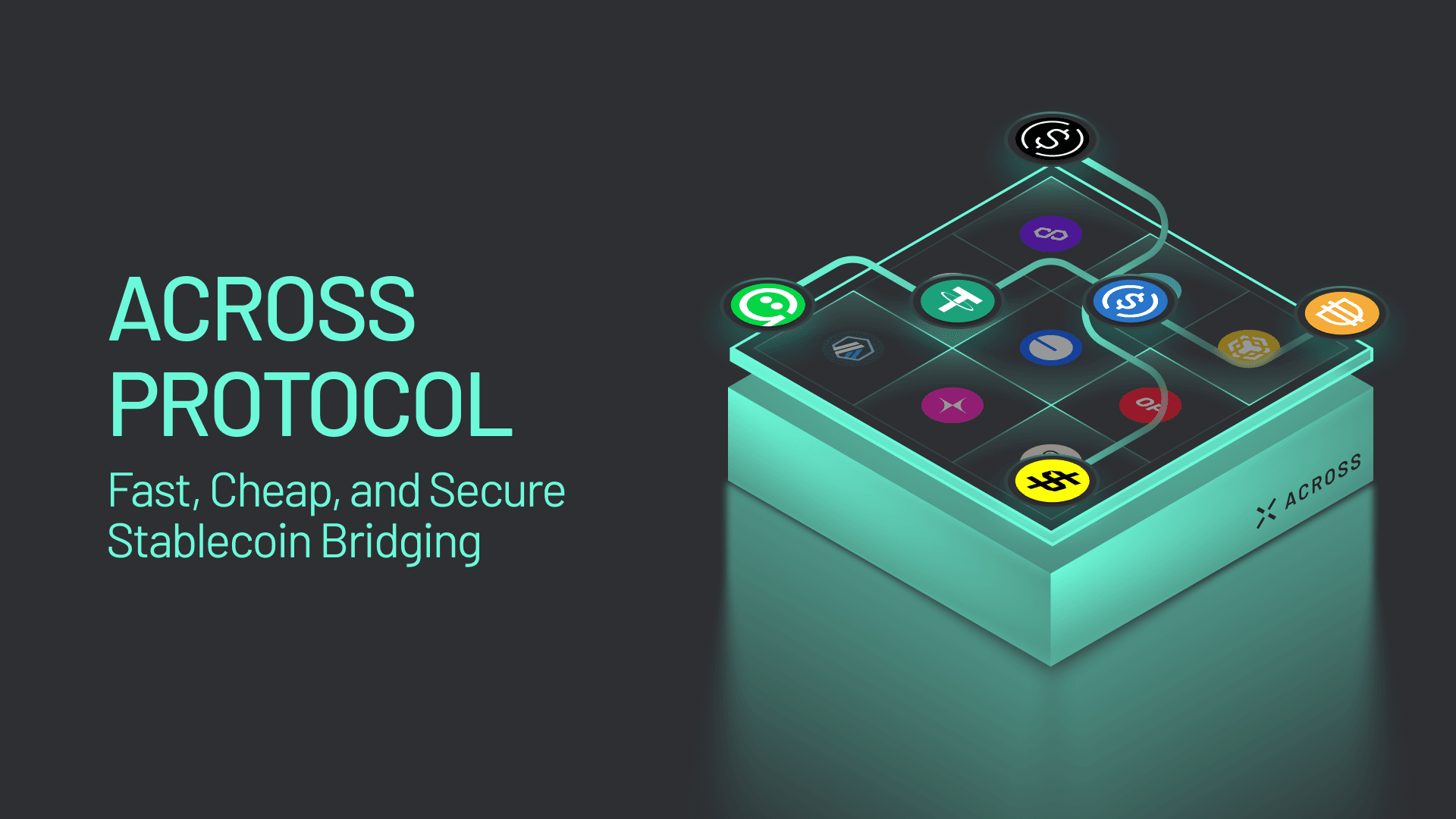
Across Protocol is the fast, cheap, and secure stablecoin bridge.
The Stablechain Era Has Begun
Stablecoins were the bridge between crypto and traditional finance. Now, stablechains are turning that bridge into a highway.
Plasma brings stablecoins to everyday users. Arc builds the rails for institutions. Tempo scales payments for the internet. Different visions, same destination: a world where value moves as freely as information.
The next time you send USDC or USDT, it might not travel through Ethereum. It may move across a stablechain instead.
Ready to bridge your stablecoins?
Join the Across community:

